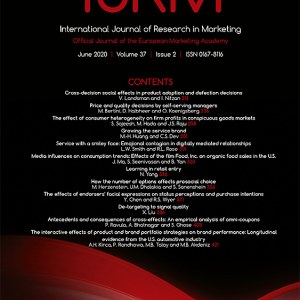
Dellaert, B., Borgers, A. and Timmermans, H. (1996). Conjoint choice models of joint participation and activity choice International Journal of Research in Marketing, 13(3):251--264.
-
Affiliated author
-
Publication year1996
-
JournalInternational Journal of Research in Marketing
Traditional conjoint choice models and experiments do not explicitly distinguish between modeling choices of whether or not to participate in a certain class of activities and choices of specific alternatives within that particular activity class. Experimental designs typically involve choices between several specific alternatives and a 'none' alternative, assuming that IIA holds between the utilities of specific alternatives and the 'none' alternative. Previous research has shown however that this assumption may be questionable (e.g. Bucklin and Lattin, 1991, Chintagunta, 1993). In this paper we present a framework to compare three possible conjoint choice modeling structures of joint participation and activity choice. These structures were tested in a case study on Dutch tourists' choices of outdoor flower exhibitions. It was found that contrary to commonly made assumptions in conjoint choice analysis an overall simple multinomial logit model was inadequate to model joint participation and activity choices. It was also found that after rescaling parameters estimated for participation choice were not significantly different from those estimated for activity choice and could be structured in an overall nested logit model.